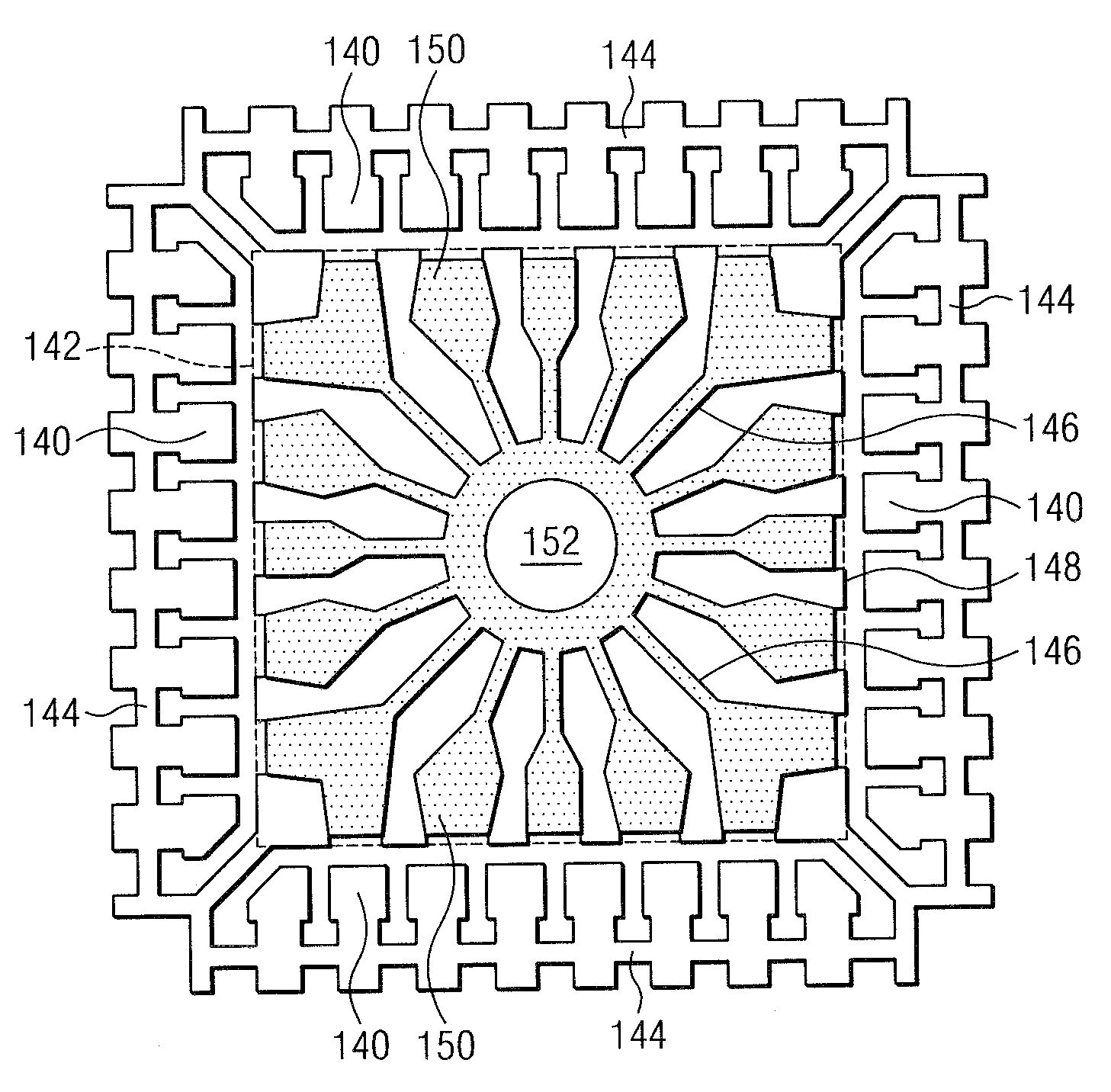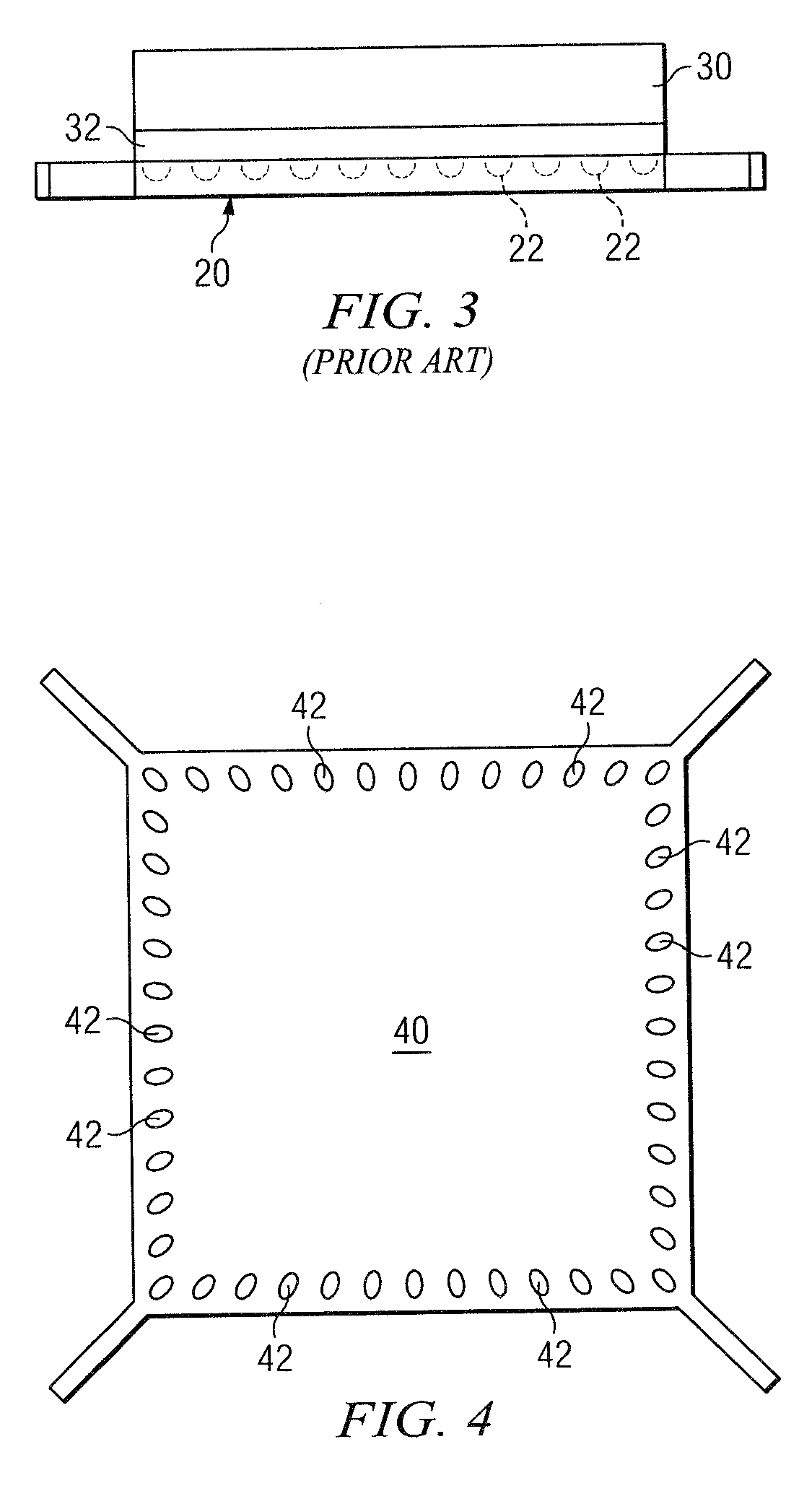Asterisk pad
- Summary
- Abstract
- Description
- Claims
- Application Information
AI Technical Summary
Benefits of technology
Problems solved by technology
Method used
Image
Examples
Embodiment Construction
[0009]Attachment of a semiconductor chip to a chip pad using epoxy can have advantages over using chip attach tape. For example, in some semiconductor manufacturing processes, attachment of a chip to a chip pad with epoxy can be a simpler process requiring less expensive materials over a process which uses chip attach tape.
[0010]In contemplating the assembly of semiconductor devices, particularly the attachment of a chip to a chip pad, the inventor has realized that even though a chip pad having dimples can have advantages, epoxy voiding can result from the use of a such a chip pad. As previously discussed, dimples can be formed in an attempt to stabilize the position of the chip relative to the chip pad. During assembly, an amount of epoxy is dispensed onto the chip pad and the chip is placed into the epoxy with a controlled force. After examining a cross sectioned device having a hemispherical dimple, the inventor observed voids in the epoxy. It was determined that as the epoxy fl...
PUM
 Login to View More
Login to View More Abstract
Description
Claims
Application Information
 Login to View More
Login to View More - R&D
- Intellectual Property
- Life Sciences
- Materials
- Tech Scout
- Unparalleled Data Quality
- Higher Quality Content
- 60% Fewer Hallucinations
Browse by: Latest US Patents, China's latest patents, Technical Efficacy Thesaurus, Application Domain, Technology Topic, Popular Technical Reports.
© 2025 PatSnap. All rights reserved.Legal|Privacy policy|Modern Slavery Act Transparency Statement|Sitemap|About US| Contact US: help@patsnap.com



